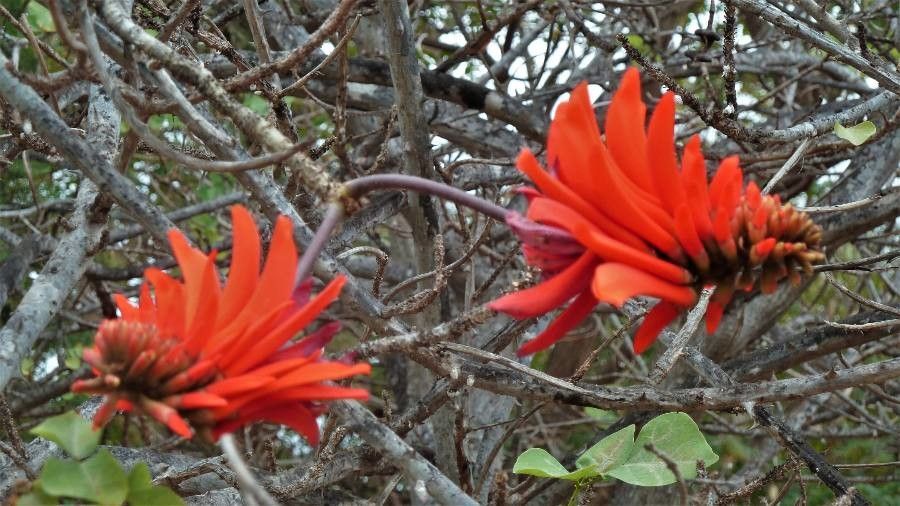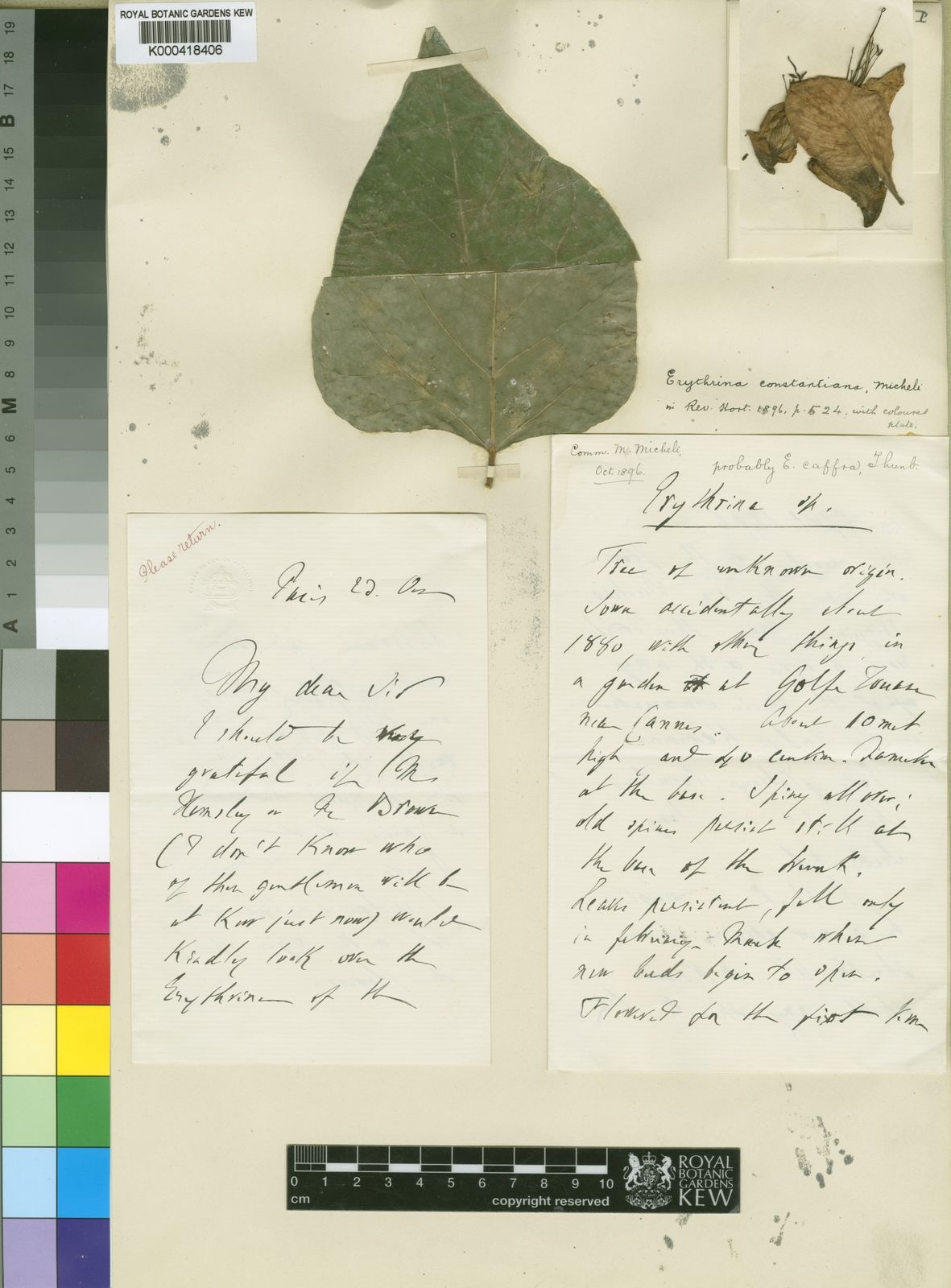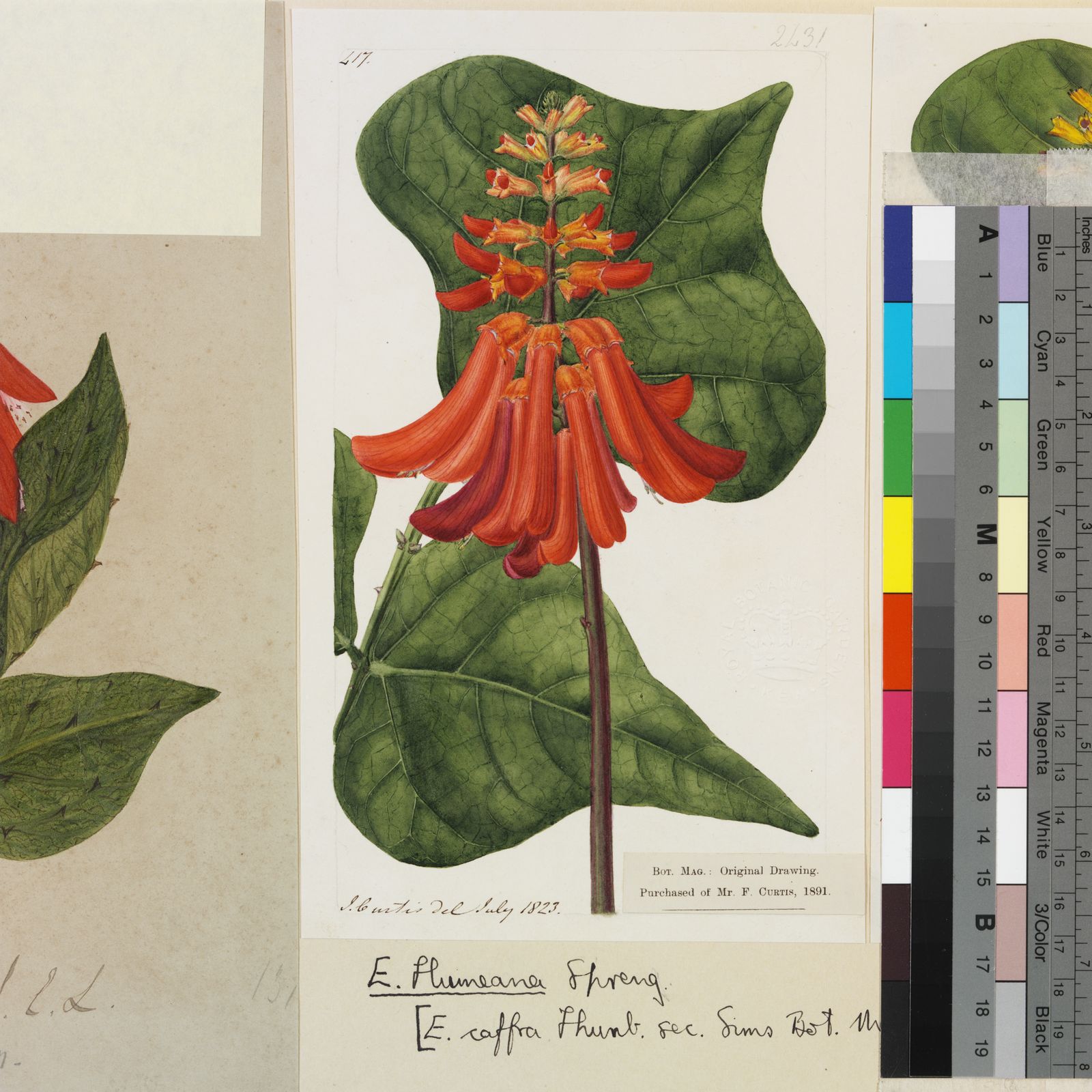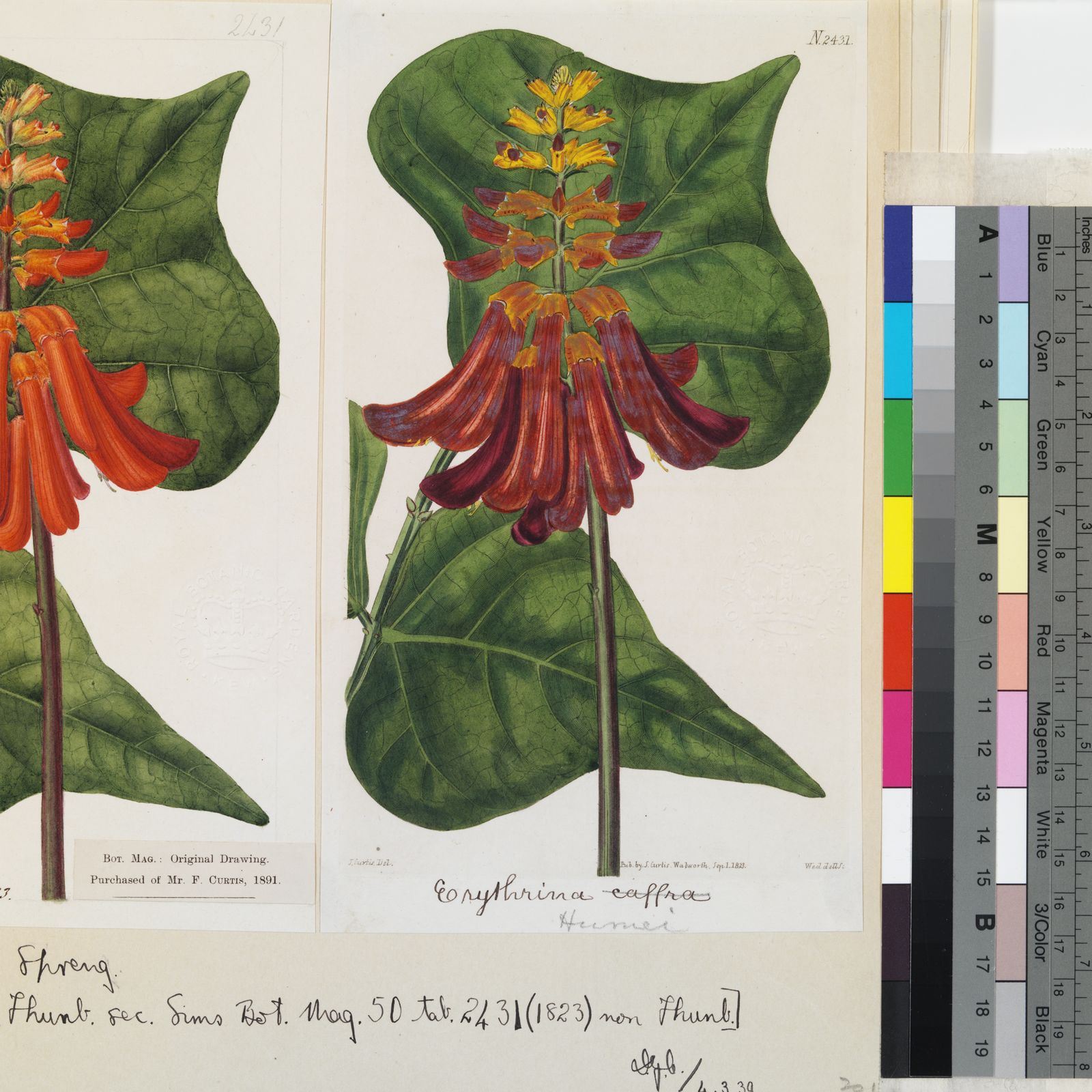Coral Tree
erythrina caffra
Also known as: ["African Coral Tree","Kaffirboom"]
Overview
A large, deciduous tree native to southeastern Africa, known for its vibrant red flowers that resemble coral branches.
Benefits & Perks
["long-flowering","wildlife attractant (bees, butterflies, birds)","fast growing","aesthetic foliage"]
Botanical Classification
| Phylum: | Magnoliophyta |
| Class: | Magnoliopsida |
| Order: | Fabales |
| Family: | Fabaceae |
| Genus: | Erythrina |
| Botanical Name: | Erythrina caffra |
Plant Characteristics
Basic Information
- Category: Trees
- Suitable Location: outdoor garden in a sunny spot, or large container in a sheltered patio
- Suitable For:
- Is Weed: No
- Allergenicity: low
Environmental Needs
- Climate: {"temperatureRange":"10–30°C"}
- Hardiness: {"zones":"9–11"}
- Misting: rarely required, only if grown in very dry indoor conditions
- Drainage: Fast-draining to prevent waterlogging.
- Soil Type: Well-draining, loamy soil with added organic matter.
Maintenance Level
- Maintenance Level: moderate
- Toughness Level: high
- Pruning Frequency: Annually in late winter or early spring before new growth begins.
- Pruning Intensity: Moderate; remove up to one-third of old growth if needed.
Care Details
Ideal Sunlight Coverage:
Full sun (6–8 hours/day); tolerates partial shade in intense heat.
Sunlight Tolerance Tips:
Acclimate gradually to intense sunlight; protect from harsh afternoon sun in summer; adjust placement based on light intensity.
Care Requirements
Care Difficulty
moderatemoderate
Sunlight
full sun to partial shade
Use shade cloth in extreme heat; rotate plant for even light exposure; avoid direct sun on leaves during peak hours.
Watering
every 7–10 days during active growth, every 14–21 days in winter
Water thoroughly but infrequently; ensure proper drainage; adjust based on season and growth stage.
Soil
well-drained, loamy soil with some organic matter
pH: Slightly acidic to neutral (pH 6.0–7.0).
Ensure soil dries between waterings; avoid heavy clay soils; amend with organic matter.
Temperature
Thrives in 65–85°F (18–29°C); tolerates mild frost but prefers warm climates.
Avoid sudden temperature shifts; protect from frost; ensure good air circulation in heat.
Fertilizing
every 4–6 weeks during spring and summer with balanced liquid fertilizer
Avoid over-fertilizing; fertilize only during growing season; flush soil occasionally to prevent salt buildup.
Propagation
Methods
Stem cuttings or seed; stem cuttings are more reliable for home growers.
Step-by-Step Propagation Guide
- Take cutting.
- Apply hormone.
- Plant in medium.
- Maintain humidity.
- Wait for roots.
Best Time: Spring or early summer when the plant is actively growing.
Environment
Warm (70–75°F), high humidity, and indirect light.
Medium
Well-draining mix of perlite and peat moss or cactus mix.
Hormone
Recommended to use rooting hormone for faster root development.
Timeline
Roots in 4–8 weeks; establish in new pot within 3–6 months.
Tools Needed
Pruning shears, rooting hormone, pots, well-draining medium.
Quick Tips
Use healthy, non-flowering stems; keep soil consistently moist but not waterlogged.
Pruning & Repotting
Pruning Guide
Method
Selective thinning and heading back to maintain shape and health.
Pruning Plan
Shape the plant, remove dead/diseased wood, and encourage bushier growth.
Tools
Pruning shears, loppers, gloves, disinfectant.
Checklist
Disinfect tools; prune dead/diseased wood; shape plant; clean up debris.
Repotting Guide
Best Season
Spring, before the active growing season begins.
Pot Size
Increase pot size by 2–3 inches in diameter.
Method
Remove plant gently; trim roots if needed; use fresh soil mix; ensure good drainage.
Suggestions
Repot every 2–3 years or when roots fill the pot; necessary for growth and health.
Checklist
Prepare new pot; trim roots; add fresh soil; water lightly; place in appropriate light.
Advanced Care Tips
Watering Mastery
Watering Checklist
Check soil moisture; water deeply; ensure drainage; adjust for season.
How to Apply Water Properly
Water at the base of the plant, ensuring moisture reaches the root zone; avoid wetting foliage; allow excess water to drain away.
Watering Schedule Tips
Water deeply once the top inch of soil is dry; reduce frequency in winter to prevent root rot.
Soil Improvement
Add perlite or sand for drainage; incorporate compost for fertility.
Temperature Stress Management
Signs of Temperature Issues
Leaf drop, stunted growth, or browning leaf edges in extreme heat or cold.
Cold Stress
Slows growth, may cause leaf drop or dieback in prolonged cold; vulnerable to frost damage.
Solution: Protect with frost cloth in winter; avoid planting in frost-prone areas; mulch to insulate roots.
Hot Stress
Wilting, leaf scorch, or reduced flowering in excessive heat; may drop leaves to conserve water.
Solution: Provide afternoon shade; increase watering; use mulch to retain soil moisture.
Fertilizing Guide
Fertilizing Checklist
Use balanced fertilizer; apply during growing season; avoid contact with roots.
Fertilizing Method
Use balanced, slow-release fertilizer in spring/summer; dilute liquid fertilizer to half-strength monthly during active growth.
Common Problems & Solutions
Toxicity Warning
Cats
ToxicCats are highly sensitive to the toxic alkaloids in Erythrina caffra. Ingestion can result in severe neurological and gastrointestinal symptoms, potentially leading to fatal outcomes.
⚠️ Symptoms:
🌿 Toxic Parts:
⚡ Toxic If:
if eaten
Dogs
ToxicThe plant's toxic alkaloids can cause severe neurological and gastrointestinal distress in dogs. Ingestion may lead to muscle weakness, paralysis, or even death if untreated.
⚠️ Symptoms:
🌿 Toxic Parts:
⚡ Toxic If:
if eaten
Humans
ToxicErythrina caffra contains toxic alkaloids that can cause severe physiological effects when ingested. The toxins interfere with the nervous system and can lead to paralysis or respiratory failure in severe cases.
⚠️ Symptoms:
🌿 Toxic Parts:
⚡ Toxic If:
if eaten
Frequently Asked Questions
Q: Is Erythrina caffra toxic to pets?
A: Yes, it is toxic to dogs and cats.
Q: Does the Coral Tree attract wildlife?
A: Yes, it attracts bees, butterflies, and birds.
Q: How difficult is it to care for Erythrina caffra?
A: It requires moderate care and maintenance.
Quick Reference
| Family: | Fabaceae |
| Care: | moderate |
| Light: | full sun to partial shade |
| Water: | every 7–10 days during activ |
Get Expert Care Tips
Download the Plantious app for personalized care reminders and plant identification!
Google Play App Store








